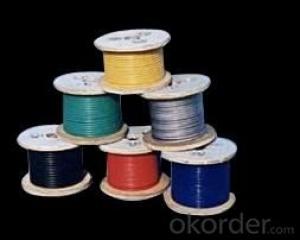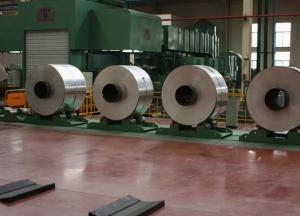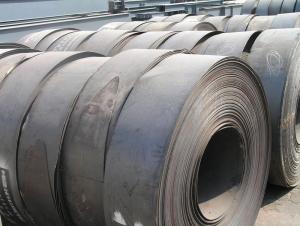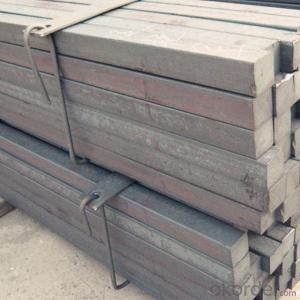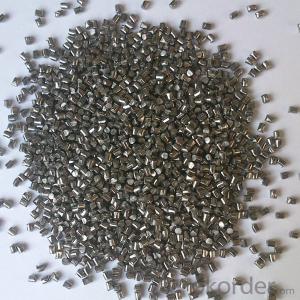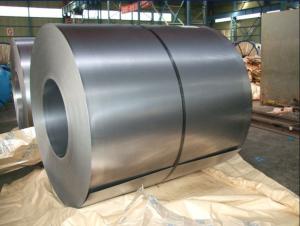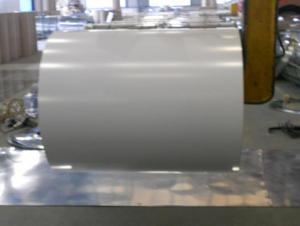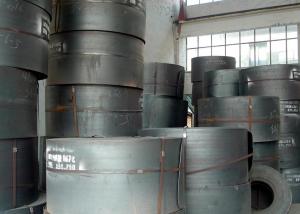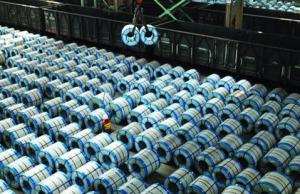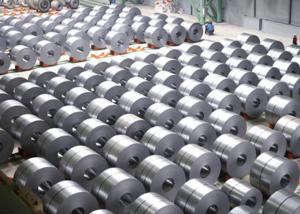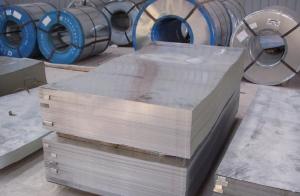PVC COATING STEEL WIRE ROPE
- Loading Port:
- China Main Port
- Payment Terms:
- TT OR LC
- Min Order Qty:
- -
- Supply Capability:
- -
OKorder Service Pledge
Quality Product, Order Online Tracking, Timely Delivery
OKorder Financial Service
Credit Rating, Credit Services, Credit Purchasing
You Might Also Like
1、STANDARD:JIS/KS/ASTM/BS/GB
2、Application: mesh(gabion mesh)binding and ornaments in garden
3、size:0.50-6.0mm
4、Tensile strength: 300-400N/mm2、400-500N/mm2、500-600N/mm2 600-700N/mm2、900-1100N/mm2
and other special tensile request.
5, PACKING
Packing:5kg/piece to 800kg/piece and other special packing request.
- Q:How are steel billets produced?
- Steel billets are produced through a process called casting, where molten steel is poured into molds and then cooled and solidified to form rectangular or square-shaped blocks. These billets are then further processed through rolling or extrusion to create various steel products.
- Q:How is steel forgings machined for precision components?
- Steel forgings are machined for precision components using various techniques such as milling, turning, drilling, and grinding. These processes involve carefully removing excess material to achieve the desired shape and dimensions with high accuracy and surface finish. The machinists utilize advanced tools, computer-controlled machines, and precise measurements to ensure that the steel forgings meet the required specifications for the precision components.
- Q:What are the key characteristics of stainless steel?
- The key characteristics of stainless steel include its corrosion resistance, high strength, durability, and low maintenance requirements. It is also known for its heat resistance, aesthetic appeal, and ability to be easily fabricated into various shapes and forms.
- Q:What are the advantages of using steel in automotive chassis?
- There are several advantages of using steel in automotive chassis. Firstly, steel is known for its high strength and durability, providing excellent protection in the event of a collision. Additionally, steel is readily available and cost-effective compared to other materials, making it a popular choice for mass production in the automotive industry. Steel also offers great flexibility in design, allowing for complex shapes and structures to be formed, contributing to improved vehicle performance and handling. Moreover, steel has good corrosion resistance properties, ensuring the longevity and reliability of the chassis. Overall, the use of steel in automotive chassis provides numerous advantages in terms of safety, affordability, versatility, and longevity.
- Q:How is steel mesh used in construction?
- Steel mesh is commonly used in construction as a reinforcement material. It is mainly used to strengthen concrete structures such as floors, walls, and foundations. The mesh is placed within the concrete to provide additional tensile strength, preventing cracks and enhancing the overall durability of the structure. Additionally, steel mesh is used in the construction of fences, barriers, and cages to provide security and containment.
- Q:What are the different types of steel wire mesh and grids available?
- There are several types of steel wire mesh and grids available, including welded wire mesh, woven wire mesh, expanded metal mesh, and perforated metal mesh. Welded wire mesh is made by welding the intersections of wires together, providing a strong and rigid mesh. Woven wire mesh is created by weaving wires together in a specific pattern, offering flexibility and versatility. Expanded metal mesh is produced by cutting and stretching a sheet of metal, resulting in a mesh with diamond-shaped openings. Perforated metal mesh is made by punching holes in a metal sheet, allowing for various hole sizes and patterns. Each type of steel wire mesh and grid has its own unique characteristics and applications.
- Q:What are the different types of steel angles and their applications in the manufacturing of machinery?
- There are several types of steel angles commonly used in the manufacturing of machinery. These include equal angles, unequal angles, and L-shaped angles. Equal angles have equal sides and are typically used for structural applications, such as frames and supports. They provide stability and strength to the machinery. Unequal angles have different sides and are used for specific purposes where additional strength or load-bearing capacity is required. These angles are commonly used in the construction of machinery components that need to withstand heavy loads or stress. L-shaped angles, also known as corner angles, are commonly used in machinery manufacturing to provide structural support and reinforcement. They can be used to reinforce corners, provide additional strength to joints, or create bracing for machinery components. Overall, the different types of steel angles play a crucial role in the manufacturing of machinery by providing structural support, stability, and reinforcement to ensure the durability and functionality of the machinery.
- Q:What are the different types of steel gratings and stair treads available?
- There are several different types of steel gratings and stair treads available, including welded steel bar grating, press-locked bar grating, riveted grating, and fiberglass grating. Each type has its own unique characteristics and is suitable for different applications, whether it's for industrial, commercial, or residential use. These options offer various load-bearing capacities, slip resistance, durability, and aesthetic qualities, allowing for versatile and customized solutions for different projects.
- Q:What are the common uses of steel pipes and tubes?
- Steel pipes and tubes are commonly used in various industries and applications. They are extensively used for transporting fluids and gases, such as water, oil, and natural gas, in plumbing and gas distribution systems. Additionally, steel pipes and tubes are essential in construction projects for structural support, including building frames, bridges, and scaffolding. They are also used in the automotive industry for manufacturing exhaust systems and chassis components. Furthermore, steel pipes and tubes find applications in the manufacturing of furniture, appliances, and agricultural equipment. Overall, their durability, strength, and versatility make steel pipes and tubes indispensable in a wide range of sectors.
- Q:What are the different types of steel staircases and handrails available?
- There are several types of steel staircases and handrails available, including straight staircases, spiral staircases, curved staircases, and floating staircases. Handrail options include traditional straight handrails, curved handrails, and wall-mounted handrails. These various types of steel staircases and handrails cater to different architectural styles and personal preferences.
1. Manufacturer Overview |
|
|---|---|
| Location | |
| Year Established | |
| Annual Output Value | |
| Main Markets | |
| Company Certifications | |
2. Manufacturer Certificates |
|
|---|---|
| a) Certification Name | |
| Range | |
| Reference | |
| Validity Period | |
3. Manufacturer Capability |
|
|---|---|
| a)Trade Capacity | |
| Nearest Port | |
| Export Percentage | |
| No.of Employees in Trade Department | |
| Language Spoken: | |
| b)Factory Information | |
| Factory Size: | |
| No. of Production Lines | |
| Contract Manufacturing | |
| Product Price Range | |
Send your message to us
PVC COATING STEEL WIRE ROPE
- Loading Port:
- China Main Port
- Payment Terms:
- TT OR LC
- Min Order Qty:
- -
- Supply Capability:
- -
OKorder Service Pledge
Quality Product, Order Online Tracking, Timely Delivery
OKorder Financial Service
Credit Rating, Credit Services, Credit Purchasing
Similar products
New products
Hot products
Related keywords
